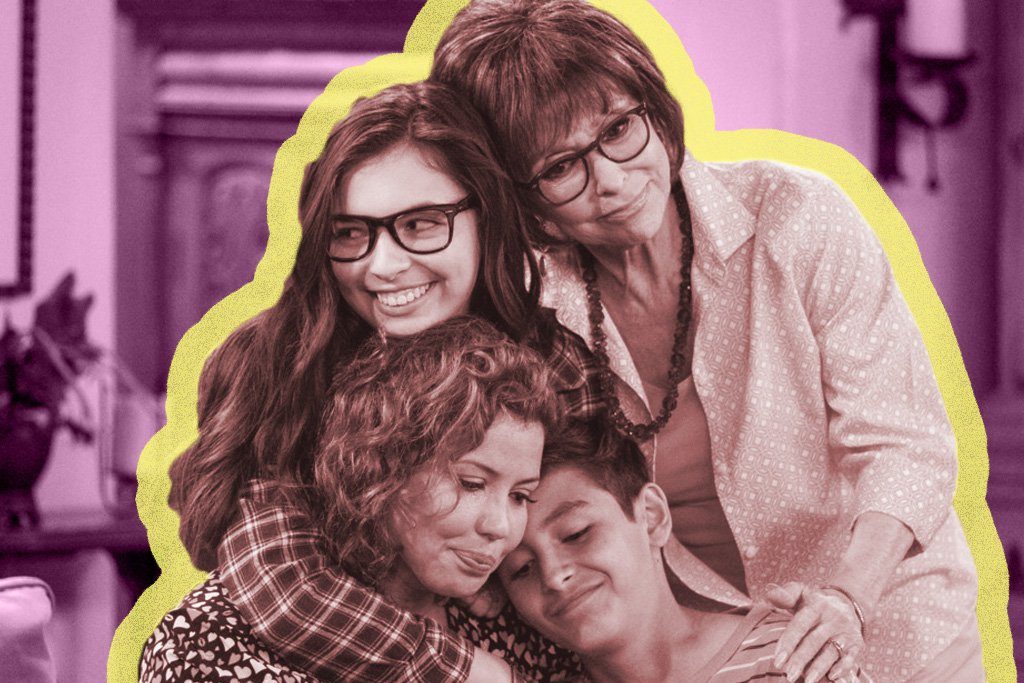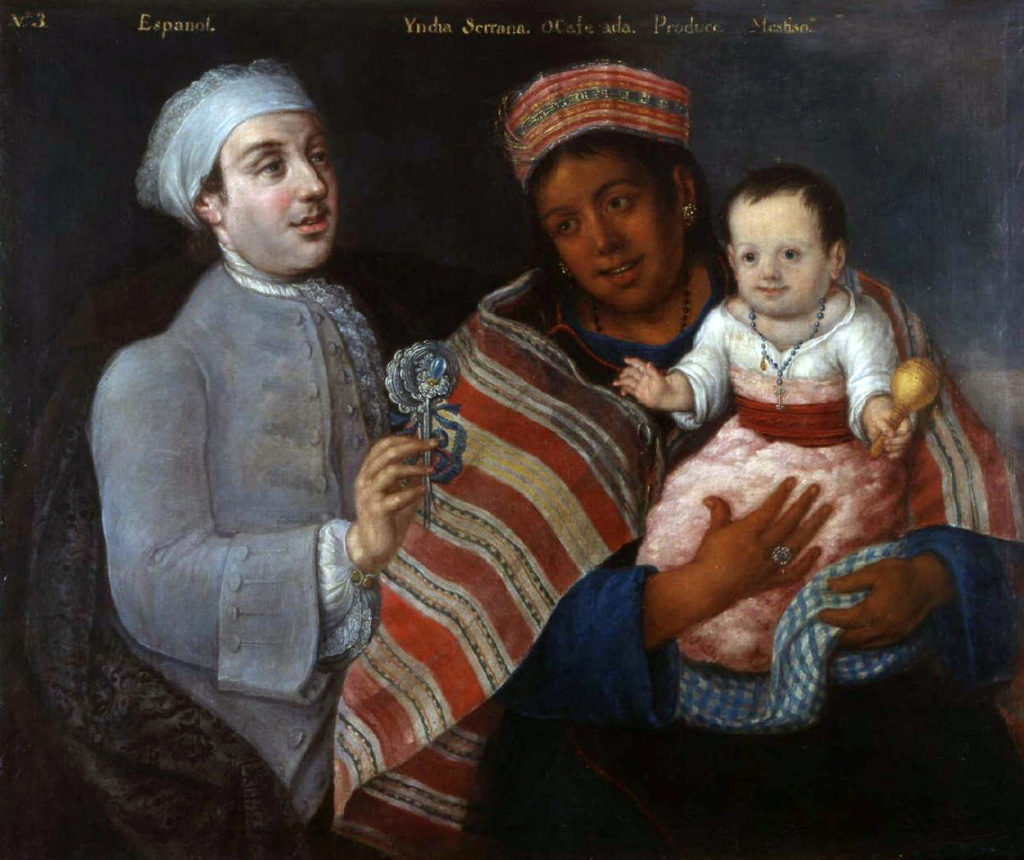Every year, usually in the spring, a great number of cultures around the world take a day to celebrate their mothers. The same natural instinct that makes the very word for mother similar across vastly different languages inspires us all to reflect on the generative and nurturing powers of mothers. Hallmark and hip brunch restaurants have turned the celebration into an industry, but at the heart of it is the general recognition that the one that the bond between a mother and the people she raises deserves to be honored with its own day.

In the pantheon of mother-goddesses, the Latin mother is definitely one of the heavyweights. The appreciation of the mother and the mother figure in Latin America runs so deep that it borders on obsession. The Latin mother is both a nurturer and a disciplinarian, capable and subtle, an amazing cook, an exacting homemaker, a skilled manager, and the ultimate martyr. La mami will do anything for her kids, and her kids adore her and are loathe to disappoint her.
My own Latin mother and I have laughed until we cried at the chancleta schtick of Colombian comedian Andrés López, the fearsome way his mother would brandish it around the house, just like mine did. Hispanic friends from all over Latin America and the U.S. have the same story about theirs. Those same friends will make their mom stay on the phone with them, giving real-time instruction, from the beginning to the end of the recipe they are trying to replicate from her repertoire. Latin moms are also known for loving and protecting their kids fiercely, being very attentive, especially to their sons, and using guilt to extort the types of responses they crave. There is a diffuse beauty to this mythology, rooted in some version of reality, but there is also a variety of factors that have contributed to creating and upholding it. There is also a dark side.

The beginning of why we are so mother-centric in our Latin cultures likely reverts back to that cultural encounter when European religion took hold in the new world, as native people were evangelized by missionaries. The conquistadors brought with them the language, culture, and religion from their native Spain and other southern European countries, which was Roman Catholicism. Many native cultures, from the Mayans to the Chibchas, worshipped a variety of deities and many of them were depicted as women. Through an alchemical reaction between the beliefs the Spanish carried over and the animistic and magical thinking of the pre-Hispanic cultures that already lived in the Americas, Mother Mary became a central figure in the worship practices of Latin America. Instead of centering churches exclusively around Jesus, as is more common, sanctuaries, shrines, and churches throughout the continent began to be dedicated to the cult of Mother Mary as early as 1525.
The Universal Mother
This first example of a Marian shrine was in México for the Virgin of Guadalupe. Different present-day countries and regions, even different towns, have a predilection for a different name and version of the Virgin Mary, each endowed with abilities to assist those who pray to them in different ways, like a patron saint. A list of them reads almost like a Hindu take on Catholicism, in which the Universal Mother contains all the various aspects of grace and salvation within her.
This bright spotlight on the mother of Jesus, understandably, permeates the culture in other ways. Like the myriad depictions of Madonna and Child from the Renaissance, this framing of the perfectly devoted mother edges out any representation of a second parent, a tightly knit family unit headed by a single mother. In the Jesus and Mary triangulation, the third point is only ever held by a disembodied higher power, Mary’s Virgin-ness foregrounding an aloneness fulfilled neither by her earthly husband or by the Father of her child. Jesus, the savior and most closely followed figure in Latin America, has as his earthly protector his mother, while his father is celestial — theoretical, abstract. In terms of her parenting, Mary has all of the work that a single mother does.
There is a mirror between this archetypal story and an underlying narrative in the culture. There are much higher expectations of mothers than of fathers within the household and in terms of raising the kids. Anecdotally, I see it often among friends: couples in which both partners are non-Hispanic Americans divide tasks like diaper duty between them. When one of the partners is Latino, there is often and a division of labor along gender lines. Going back a couple of generations, to my parents’, it was rare that a dad would have ever changed a diaper or watched his own kids without his female partner around. There are many years of conditioning that have gone into these social patterns and they endure because they work unconsciously.
How a Culture of Mothering Effects Our Work
Men have their own pressures, providing for their family chief among them. But Latinas are industrious and the disproportionate weight of parenting duty has not kept us away from working. As per this study, the number of women in the workforce in Latin America has grown significantly since 1990, while in the U.S., overall, it has been on the downfall. Even the number of women who have been heads of state in Latin America is impressive, not because the total sum is even close to what it ought to be (which is half, just like the female population of the world) but because it reflects a degree of reverence for mothers when a woman is empowered to mother a whole nation.

In Latin America, the trend is far more extreme. In some countries, topped by Colombia with a stunning rate of 84%, more and more babies are being born to single mothers and this is by design. Prepared to become mothers, many more women are realizing that they also want to keep their personal and financial freedom. Choosing to have children either on their own or in co-parenting situations that do not obligate them to live with a partner have a romantic relationship, they are avoiding marriage on the objection that it’s a contract, one that in patriarchal societies does not benefit them.
In Argentina, for example, onerous divorce laws are driving the marriage rate down, with fewer people willing to take a risk on a relationship that could end up costing them years and thousands to end it. Instead, families consist of parents, grandparents, and close friends, more communal structures than the previous model family unit. A formerly very traditionalist society has, within a short time, redefined its idea of a family. Mothers of all socioeconomic strata in Latin America are concerning themselves more with the quality of their lives than with fulfilling roles that were created for them through millennia of cultural conditioning.
Socially and financially things are improving dramatically for Latin American mothers, but not all is rosy. After generations of chauvinism, it would be naive to think that all things are now egalitarian. There is still far too much violence perpetrated against women all around the world, but one of the most insidious is obstetric violence. Latin America is rife with ethical breach stories in obstetrics, in which the male doctor trumps the mother’s birth plan, performing all order of unnecessary interventions. Extreme cases include putting laboring moms under to bypass consent for surgical procedures. If not in act, physicians have done harm in word by their patronizing manner and downright violence when repairing an episiotomy more tightly than necessary as a service to the husband.
The Truth About Earning Power
In the U.S., the situation is somewhat different, with over 40% of Latino children are being raised by a single parent, many of them women. This number is higher than the national average and twice as high as white, non-Hispanic families. Unlike in Latin America, it isn’t necessarily so by choice and it does not frequently result in a better financial situation for the mother. In the U.S., we don’t have the same earning power as men yet. Latinas, in particular, will have to wait the longest to bridge the pay gap — until 2224 — when compared to their white and black counterparts.

Earning less for comparable work in every single measurable profession does not provide U.S. Latinas with the same motivation that women in Latin America are getting. And while single motherhood is a choice across all social classes within Latin America, Latin immigrants in the U.S. tend to maintain more traditional views on marriage and family. This has meant importing certain customs, like having older family members living in the same household, with abuela passing down traditions to mamá in real time. Another common practice by Latinas is staying home to raise their children. Latinas, even U.S.-born ones, still feel driven to be dutiful wives and mothers. They, far more than other ethnicities in the U.S., feel they ought to stay home for the benefit of their children.
According to this study by Pew Research, even married stay-at-home immigrant moms are living very humbly, with almost half living below the poverty line. There are more U.S-born Latinas raising children on their own than foreign-born, but in order to justify child care and be able to go out of the home for work, they are usually required to have a college degree. This is a high bar for recent arrivals from developing countries, who end up preferring to stay married to a wage earner and working in the home. Domestic-born Latinas are more likely to have gone to college and can aspire to higher earning jobs. In both cases, though, the numbers have room to improve, with Latina moms deserving a much higher return on their investment into their families.

Motherhood is still the most revered occupation among Latin Americans, above and beyond all of the other work that women — even badass single mothers — do to keep themselves and their families afloat. Within the patriarchal structure of the society, a system that reveres us as mothers but does not always respect us as people, sometimes the appreciation has gotten to be so extreme it borders on the macabre. Such has been the case in the decades in which guerrillas in Colombia and gangs in Central America and México recruited painfully young sicarios to perform suicide assignments, with payment due to the after the fact to the mom. These mothers were left with the refrigerator she always wanted but no son, or a big house to live in by herself. No one aspires to this kind of divinity.
Instead, we can continue to find ways in which our devotion to motherhood and our children empowers us to do more and feel better about our own lives. It’s our responsibility to continue to become aware of our own cultural conditioning and make it la source of strength, rather than a cross to bear, for future generations of women.
For Image credit or remove please email for immediate removal - info@belatina.com






































